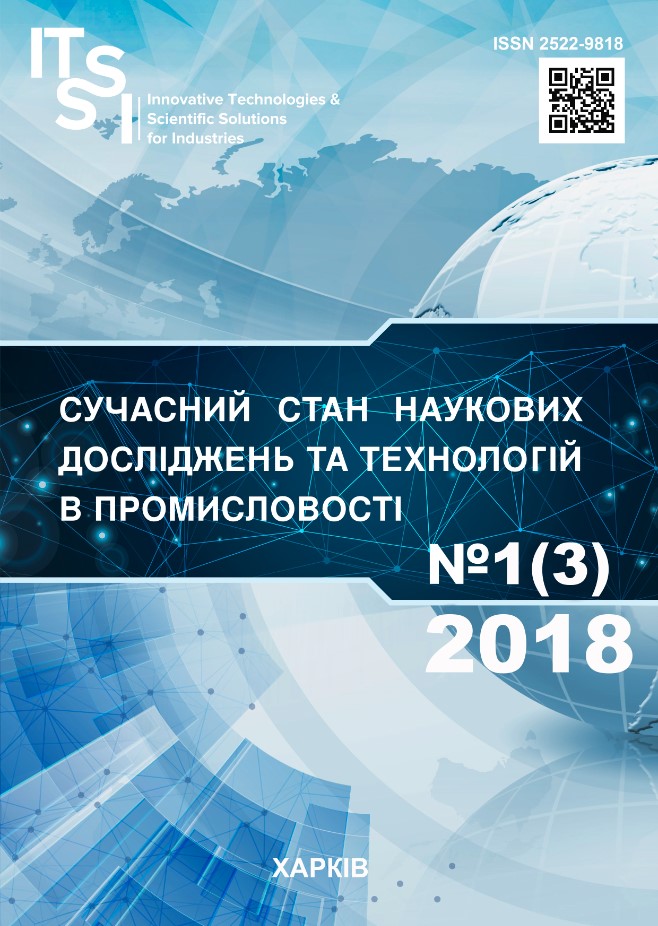ПРО ОДИН ПІДХІД ДО ПОШУКУ ФУНКЦІОНАЛЬНИХ ЗАЛЕЖНОСТЕЙ ДАНИХ У РЕЛЯЦІЙНИХ СИСТЕМАХ
DOI:
https://doi.org/10.30837/2522-9818.2018.3.054Ключові слова:
реінжиніринг, реляційна база даних, функціональна залежність, виявлення залежностей, універсальне відношення, замикання функціональних залежностейАнотація
Предметом дослідження є інформаційні системи, побудовані на основі реляційних баз даних. Метою статті є розробити метод для реінжинірингу реляційних баз даних, що враховує неявні взаємопов'язані функціонально залежні данні, які впливають на структуру логічної моделі. Отримані такі результати: в статті запропоновано підхід до виявлення раніше невідомих функціональних залежностей, який ґрунтується на аналізі безлічі даних реляційної бази даних. Виділено класи завдань реінжинірингу реляційних баз даних; досліджений етап формування цільової логічної схеми, яка є спільною для задач адаптації та рефакторінга. Розглянуто підзавдання перевірки відповідності логічної схеми реляційної бази даних третій нормальній формі в межах даного етапу за допомогою методу синтезу; показано, що її рішення пов’язане з низкою труднощів, зокрема, необхідністю знаходження безлічі функціональних залежностей, що виконуються на поточному екземплярі даних деякої реляційної бази даних. Запропоновано підхід для знаходження безлічі функціональних залежностей з примірника даних реляційної структури. Напрямком для подальших досліджень може стати реалізація підтримки порожніх значень на етапі виявлення функціональних залежностей, а також питання перенесення даних без втрат з вихідної структури бази даних в цільову, отриману в результаті застосування методів реінжинірингу. Висновки. В роботі запропоновано підхід до виявлення раніше невідомих функціональних залежностей, який ґрунтується на аналізі безлічі даних реляційної бази даних. Першим кроком є отримання безлічі функціональних залежностей для кожного відношення. На другому кроці проводиться аналогічна операція для універсального відношення даної бази даних. На цьому кроці стає можливим виявлення функціональні залежності між атрибутами різних відносин – взаємозв’язку між даними, які встановилися в процесі функціонування інформаційної системи. Запропоновано спосіб визначення їх інформаційної новизни, який полягає у перевірці членства функціональних залежностей універсального відношення в замиканні об’єднання множин залежностей окремих відносин. Для подальших досліджень перспективним напрямком є розробка методів для реалізації технології перевірки отриманих залежностей на предмет відповідності логічної моделі предметної області.Посилання
Rossiter, N. (2011), Re-engineering relational databases: the way forward: ISWSA '11, ACM New York, NY, USA, 17 p.
Konstantinov, S. M., Ponomarenko, Yu. L., Filatov, V. O. (2016), "Chastkovo vidobrazhennya modeley Danykh pry intehratsiyi informatsiynykh system", Ekonomiko-matematychne modelyuvannya sotsialno-ekonomichnykh system. Zb. nauk. prats, Kyiv, P. 140–158.
Kosenko, V. (2017), "Principles and structure of the methodology of risk-adaptive management of parameters of information and telecommunication networks of critical application systems", Innovative Technologies and Scientific Solutions for Industries, No. 1 (1), P. 46–52. DOI: 10.30837/2522-9818.2017.1.046
Filatov, V. A., Chaplanova, E. B. (2012), "Development of Information Technology of Object-relational Databases Design" ["Rozrobka informatsiynoyi tekhnolohiyi proektuvannya ob'yektno-relyatsiynykh baz danykh"], European Researcher, Vol. (36), No. 12, P. 2095–2101.
Filatov, V., Voloshchuk, O., Spivak, N. (2016), "Implementation and support fuzzy systems by means the relational data model" ["Realizatsiya ta pidtrymka nechitkykh system zasobamy relyatsiynoyi modeli danykh"], Współpraca Europejska, European Cooperation, Vol. 4, No. 11, P. 49–61.
Huhtala, Ykä (1999), "Tane: An Efficient Algorithm For Discovering Functional and Approximate Dependencies", The Computer Journal, No. 42 (2), P. 100–111.
Filatov, V. A., Chaplanova, E. B., Spivak, N. O. (2014), "Komponenta obmezhen tsilisnosti yak element ob'yektno-relyatsiynoyi modeli danykh", Informatsiyno-keruyuchi systemy na zaliznichnomu transporti, No. 6 (109), P. 30–34.
Radchenko, V. A., Tanyanskyy, S. S. (2012), "Vyyavlennya prykhovanykh zalezhnostey mizh danymy v zadachakh reinzhynirynhu informatsiynykh system", Information Processing Systems, Vol. 3 (101), 268 p.
Meyer, D. (1987), Teoriya relyatsiynykh baz danykh: trans. for English, Moscow : Svit, 609 p.
Rudenko, D. A., Filatov, V. A. (2013), "Formalnyy pidkhid do opysu vlastyvostey danykh v informatsiynykh systemakh", Visnyk Khersonskoho natsionalnoho tekhnichnoho universytetu, No. 1 (46), P. 146–149.
Filatov, V. (2014), "Fuzzy models presentation and realization by means of relational systems", Econtechmod: an international quarterly journal on economics in technology, new technologies and modelling processes, Lublin, Rzeszow, Vol. 3, No. 3, P. 99–102.
Filatov, V., Radchenko, V. (2015), "Reengineering relational database on analysis functional dependent attribute", Proceedings of the X Intern. Scient. and Techn. Conf. "Computer Science & Information Technologies" (CSIT'2015), 14-17 sept. 2015, Lviv, Ukraine, P. 85–88.
Radchenko, V. A. (2011), "Modyfikatsiya metodu vyyavlennya funktsionalʹnykh zalezhnostey v relyatsiynykh bazakh danykh", Informatsiyni tekhnolohiyi v navihatsiyi y upravlinni: stan ta perspektyvy rozvytku. Materialy Druhoyi mizhnarodnoyi naukovo-tekhnichnoyi konferentsyy, Kyiv : DP «TSNDI NiU», 52 p.
##submission.downloads##
Опубліковано
Як цитувати
Номер
Розділ
Ліцензія
Авторське право (c) 2018 Valentin Filatov, Stanislav Doskalenko

Ця робота ліцензується відповідно до Creative Commons Attribution-NonCommercial-ShareAlike 4.0 International License.
Наше видання використовує положення про авторські права Creative Commons для журналів відкритого доступу.
Автори, які публікуються у цьому журналі, погоджуються з наступними умовами:
Автори залишають за собою право на авторство своєї роботи та передають журналу право першої публікації цієї роботи на умовах ліцензії Creative Commons Attribution-NonCommercial-ShareAlike 4.0 International License (CC BY-NC-SA 4.0), котра дозволяє іншим особам вільно розповсюджувати опубліковану роботу з обов'язковим посиланням на авторів оригінальної роботи та першу публікацію роботи у цьому журналі.
Автори мають право укладати самостійні додаткові угоди щодо не комерційного та не ексклюзивного розповсюдження роботи у тому вигляді, в якому вона була опублікована цим журналом (наприклад, розміщувати роботу в електронному сховищі установи або публікувати у складі монографії), за умови збереження посилання на першу публікацію роботи у цьому журналі.
Політика журналу дозволяє і заохочує розміщення авторами в мережі Інтернет (наприклад, у сховищах установ або на особистих веб-сайтах) рукопису опублікованої роботи, оскільки це сприяє виникненню продуктивної наукової дискусії та позитивно позначається на оперативності та динаміці цитування опублікованої роботи.














